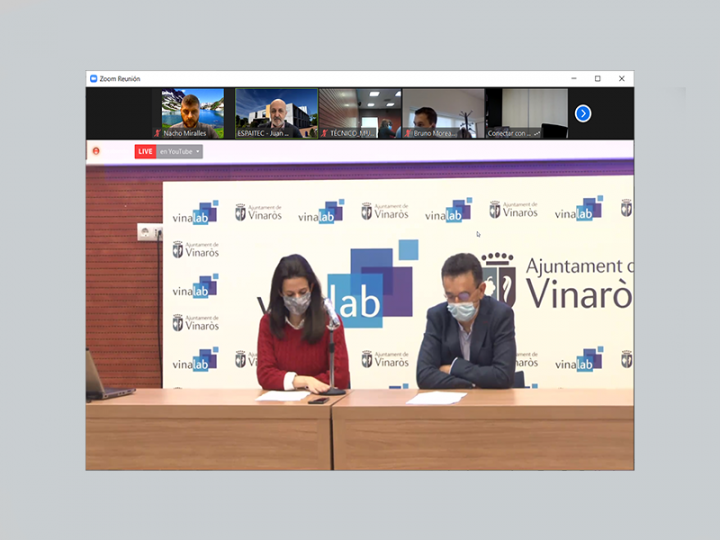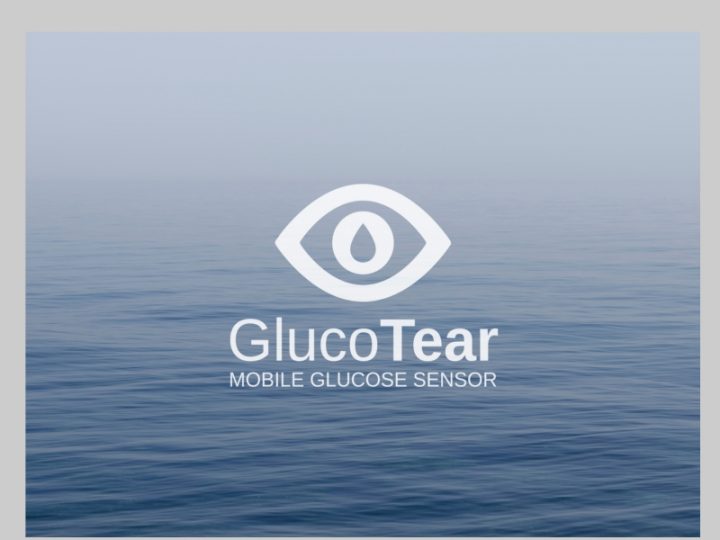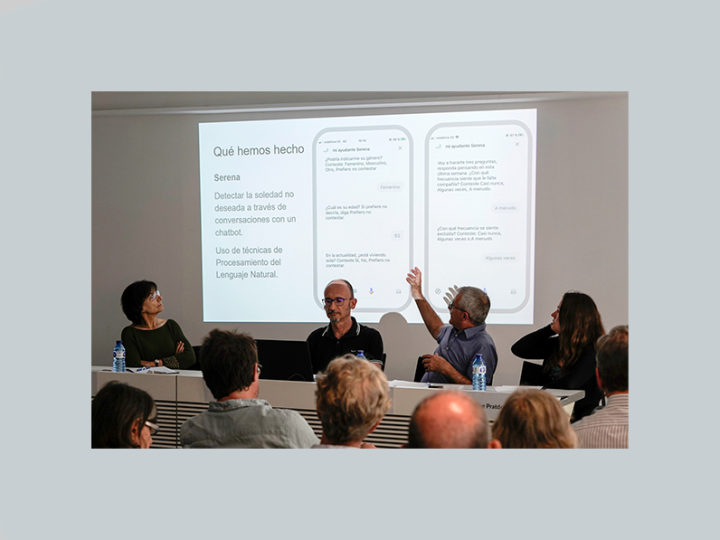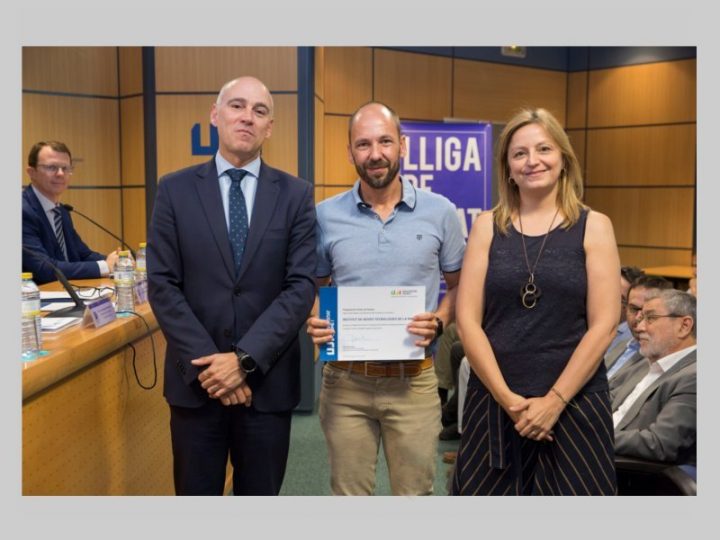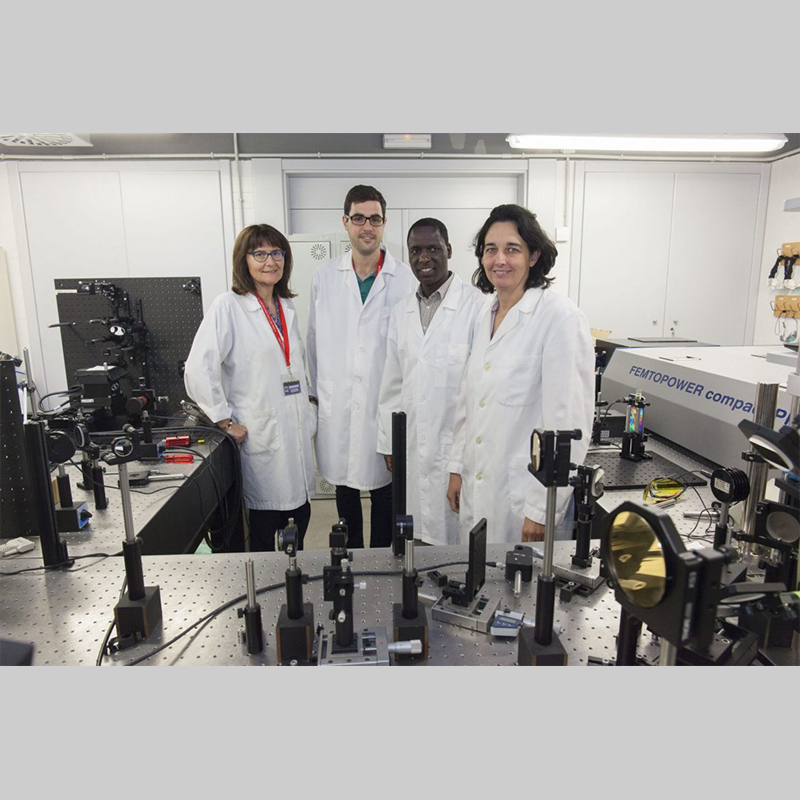
The Universitat Jaume I (UJI) has developed synthesized nanomaterials using laser irradiation techniques with future applications in various fields of health. The Optics Research Group (GROC) has created high-purity carbon quantum dots that could be used for eye protection or diabetes monitoring. The findings of this study have been published in the journal Particle & Particle Systems Characterization.
The results of this research are part of the European project Glucotear, an initiative led by GROC members, under the coordination of Professor Jesus Lancis, and developed in collaboration with the Ophthalmology Service of the General University Hospital of Castellón and the company BQ. Glucotear has been the first UJI project funded through Marie Skłodowska-Curie actions in the form of individual grants from the European research and innovation program Horizon 2020. Researcher Wycliffe K. Kipnusu has worked on the project for two years, together with Gladys Mínguez, Carlos Doñate, Mercedes Fernández and Jesús Lancis, all co-authors of this publication.
Glucotear’s goal was to develop a nanoparticle-based optical glucose sensor that can be used with a cell phone. The idea is to be able to monitor the blood glucose level while avoiding the annoying finger prick that is usually used for sample extraction. In fact, researchers want to get to monitor glucose in eye tears, as this concentration is correlated with its value in the blood.
“The great difficulty that has had to be faced was the development of new, more sensitive sensors because glucose is much more diluted in the tear than in the blood. To this end, the researchers synthesized a new sensor based on nanotechnology and photonics based on the fluorescence signal emitted by the nanoparticles when they are illuminated “, argue from the UJI research group.
The future use for eye protection of nanoparticles created by GROC-UJI researchers is one of the novelties of the work published in Particle & Particle Systems Characterization. These nanoparticles, deposited in transparent nanoporous silica, are able to reduce the power of a pulsed laser beam and, consequently, can protect the eye from this type of radiation.
A GREEN AND SUSTAINABLE TECHNIQUE
Laser-based synthesis allows the development of a nanotechnology that can be considered “green and sustainable because it does not require an excess of polluting chemicals or necessarily produce waste. In addition, the process to provide functions to the nanoparticles – called functionalization – is simple, clean and efficient, as it is obtained in situ during the process of synthesis with pulsed laser “, says the researcher and professor of the Department of Physics Gladys Mínguez.
The invention has allowed the synthesis of a single quantum carbon dot – which had not been previously obtained by other procedures – with a proven ability to detect very low glucose levels, thanks to its high quantum efficiency in fluorescence, in around 63% and with high photostability, tested for more than 15 hours, as researcher Wycliffe Kipnusu comments. This new class of quantum carbon dot opens the door to numerous applications in companies specializing in nanoparticle synthesis; sensor manufacturers (optics, analyte detection or biomarkers); in the health and food sector and in R & D & I centers.
Professor of Optics Jesús Lancis, currently Vice-Rector for Research and Transfer at the UJI, stresses that photonic technologies and devices based on the use of light, as revealed by the project funded by the European Commission Glucotear, have a role , “Increasingly significant in solving the challenges facing today’s society such as energy generation, energy efficiency, healthy aging, climate change and population security.”
The GlucoTear initiative has made a significant contribution to the development of a new optical sensor for measuring glucose. But not only that, the manufactured quantum carbon dots also have a triple emission in three colors (blue, green, red) which is suitable for many other applications, including biological imaging, sensors, and light emitting diodes. Additionally, a high fluorescence emission was obtained when quantum carbon dots were deposited in solid state matrices, thus expanding their possible applications.
The UJI Optics Research Group focuses its activity on light control to improve image acquisition systems and the synthesis of nanomaterials for the promotion of new industrial processes and the development of new technologies. health.



